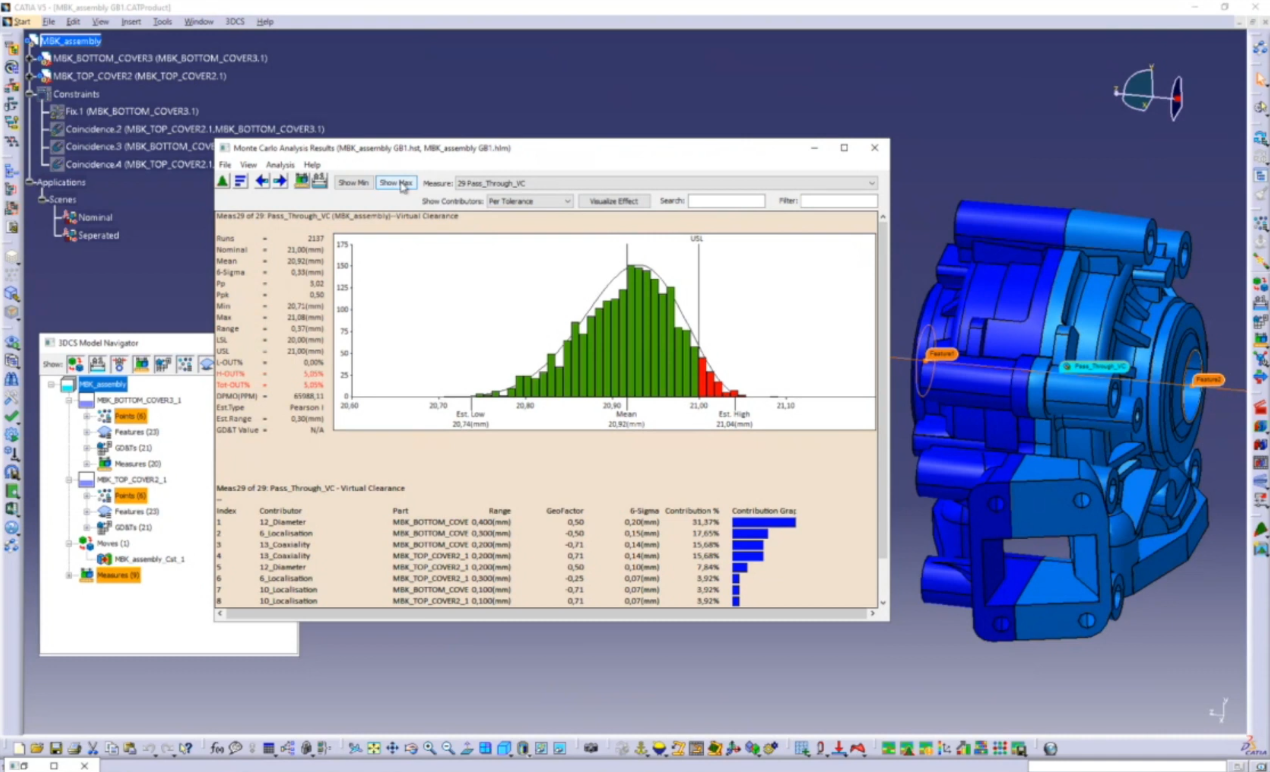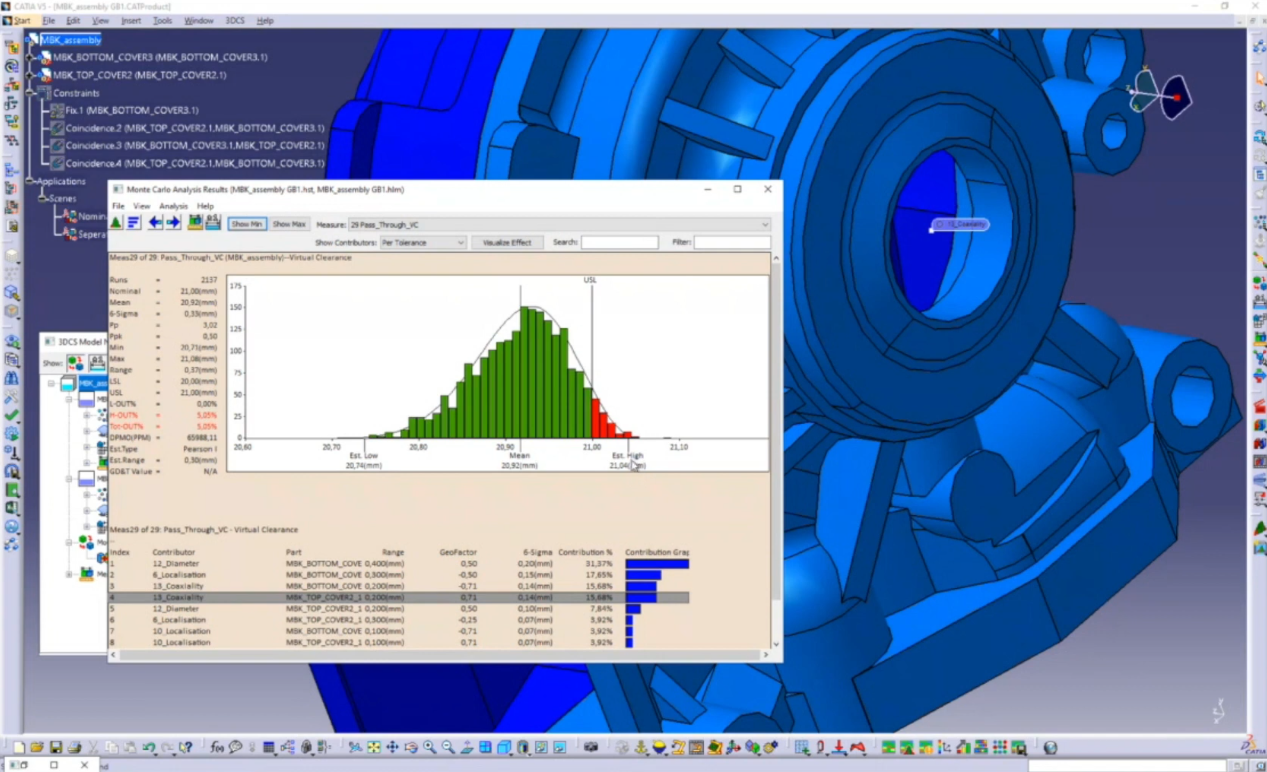
Unlock the potential of Monte Carlo simulations in manufacturing to predict and enhance product build success rates.

Monte Carlo simulations have become a cornerstone in the manufacturing industry, providing unparalleled insights into the variability and reliability of product builds. By running thousands of random simulations, manufacturers can predict the likelihood of assembly success and identify potential failure points before they occur.
This analytical method leverages advanced algorithms to simulate the manufacturing process under various conditions, allowing engineers to see how different factors influence the final product. As a result, Monte Carlo simulations help in making informed decisions that enhance product quality and reliability.
Tolerance analysis models are essential tools that help manufacturers understand how part and assembly tolerances affect the overall build and fit of a final product. These models provide a comprehensive view of how variations in dimensions can impact product performance and quality.
In 3DCS Variation Analysis software, there are three primary types of tolerance analysis results: Monte Carlo simulation, High-Low-Median (HLM) sensitivity analysis, and GeoFactor geometric effects analysis. Each of these analyses offers unique insights that are crucial for assessing and improving product quality.

Monte Carlo simulations play a pivotal role in predicting build success by estimating the percentage of assemblies that will meet critical quality characteristics. This method uses statistical sampling to model the impact of variable tolerances on the final product, providing a probabilistic forecast of build outcomes.
By understanding the likelihood of various assembly scenarios, manufacturers can proactively address potential issues, reduce defects, and ensure higher quality standards. This predictive capability is invaluable for optimizing production processes and minimizing costly rework.
While Monte Carlo simulations provide a broad overview of potential build outcomes, High-Low-Median (HLM) and GeoFactor analyses offer more targeted insights. HLM analysis identifies which tolerances contribute most to failures by examining the full range of a tolerance, helping engineers prioritize which areas need tightening or monitoring as critical to quality characteristics.
On the other hand, GeoFactor analysis focuses on the geometric aspects of part tolerances, revealing how part shapes and configurations affect assembly variability. By combining the results of Monte Carlo, HLM, and GeoFactor analyses, manufacturers gain a comprehensive understanding of tolerance impacts, enabling precise and effective optimization.
The insights gained from Monte Carlo simulations and tolerance analyses are instrumental in optimizing both design and manufacturing processes. By identifying critical tolerance contributors and understanding their impacts, engineers can make informed adjustments to improve assembly precision and product quality.

These optimizations can lead to significant reductions in assembly time, material waste, and the need for rework. Additionally, fine-tuning the design and manufacturing processes based on simulation results helps in achieving cost savings and enhancing overall production efficiency.
Get a free one-on-one demonstration with a DCS engineer by clicking here - https://mkt.3dcs.com/contact-us
or Learn more at https://www.3dcs.com/dcs-videos-learn-tolerance-analysis
These Stories on CATIA
No Comments Yet
Let us know what you think